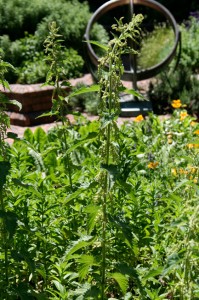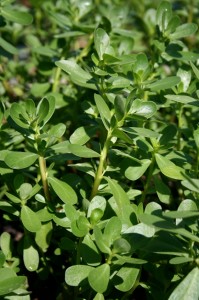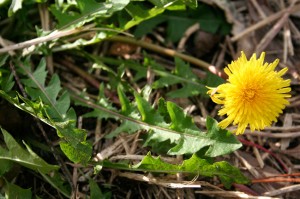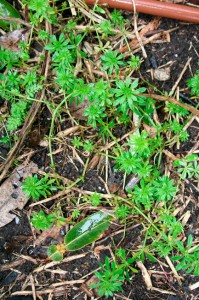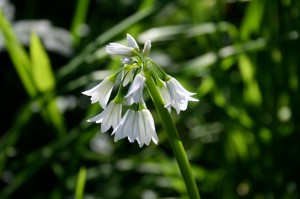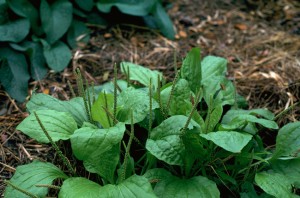Of course not all weeds are edible. In fact some are very poisonous, but there are a number that not only taste good but are full of useful vitamins and minerals. Others can be used as remedies for simple complaints such as colds, cuts or stings. Most also have a fascinating history.
One of the most useful weeds found in Australian gardens or nearby wastelands is the common stinging nettle (Urtica dioica). Before you recoil in horror I’m not suggesting anyone use them in the way the Romans did, who when they first came to England were advised to flog themselves with nettles to get their circulation moving on cold English mornings. Life must have been considerably harder then. Flogging with nettles or ‘urtication’ is still sometimes recommended as a treatment for arthritis or rheumatism. At the very least nettles should be pulled out (wearing gloves) and added to the compost as they add minerals and speed the composting process. Drying or cooking de-activates the sting but if you do get stung, rub the affected part with a broken nettle stem to stop the pain. Nettles contain vitamins A, B and C as well as iron, silica and potassium; dried plants make a nutritious addition to stock and poultry food. The leaves have been used for centuries as a nourishing tonic, taken in the form of a tea, and young leaves are delicious cooked as a vegetable. Harvest them carefully and simmer gently in a shallow pan for 10 minutes with a little butter, turning regularly. Add salt and pepper before serving with meat or other vegetables.
Fat hen or lamb’s quarters (Chenopodium album) is another weed that can be cooked as a nutritious green vegetable. It is commonly found growing near manure heaps and has a spinach like flavour. Young leaves are cooked in the same way as spinach or added raw to salads. Leaves contain vitamins A and C, calcium and iron. If you decide to sample this plant you’ll be in interesting company. Napoleon ate bread made from the seeds, as did some American Indians. Fat hen plants were found in the stomach of a man, from about AD 300, who was dug from a Danish peat bog .
Purslane (Portulaca oleracea) is a problem weed in many gardens, but is rich in iron and vitamin C. So instead of cursing it, add the crunchy, cooling leaves to salads where they combine beautifully with hot salad herbs such as rocket and mustard greens. The leaves can also be pickled, cooked as a vegetable or added to soups. It is possible to buy seed of a cultivated form with golden leaves and more upright habit that can be used in the same way.
Common dandelion (Taraxacum officinalis) contains vitamins A, B, C and D as well as zinc, potassium, phosphorous, manganese, magnesium, iron and calcium. Harvest young leaves in spring and add them to salads. In summer and autumn the old leaves are too bitter to use but if they are all removed, new growth can be picked as it appears. The French name for dandelion, ‘Piss-en-lit’, roughly translates as ‘wet the bed’ indicating its medicinal use as a diuretic, but eaten as a regular addition to salads it does no more than enhance the diet. The flowers are also used in salads and to make wine. The roots are harvested in autumn and roasted to make a caffeine free coffee substitute. Dandelion can be confused with other similar looking weeds but is easily distinguished once in flower because of the hollow flower stem.
Cleavers (Galium aparine) is also known as goosegrass and sticky willy. It is a vigorous, sticky, trailing plant that twines through bushes and quickly covers large areas. Cleavers was used in the past made into a soup ‘to cause lanknesse and keepe them from fatnes’ and generally as a cleansing tonic. Once the sticky pods appear, the whole plant is too tough to eat but tender shoots and new leaves can be eaten as a vegetable sweated like spinach, or can be added to soups.
Onion weed (Allium triquetrum) is found in temperate regions where it colonises waste areas. Seed is spread by ants which carry it long distances. The leaves, flowers and bulbs can all be eaten – the leaves and flowers as a garnish for salads, soups and stews, and the bulbs in the same way as onions. Potato and onion soup is delicous made with this weed.
Plantain (Plantago major) and horehound (Marrubium vulgare) are both common weeds that are more often used medicinally than as a regular part of the diet. Young plantain leaves have been used in salads and it was called waybread by the Anglo-Saxons because it was such an important food source. I have always found the leaves tough and tasteless though. Plantain’s main claim to fame is as a wound healer, its reputation being so high that it was believed that ‘if several pieces of flesh were put in a pot with plantain it will join them back together again’. It is also a great remedy for sandfly bites, just crush the leaf and rub it over the bite. Horehound is a problem weed particularly in wool growing regions where the hard seed cases get into fleeces and detract from their quality. However it is also a well-known remedy for coughs and colds. It is still possible to buy horehound cough lollies and a cup of horehound tea made from fresh leaves will alleviate the symptoms of a cold, but it tastes pretty awful being quite bitter so add honey or sugar. If you wish to remain undisturbed while out for a walk then put a few horehound leaves inside your shoes and dogs will not bark as you go by!

